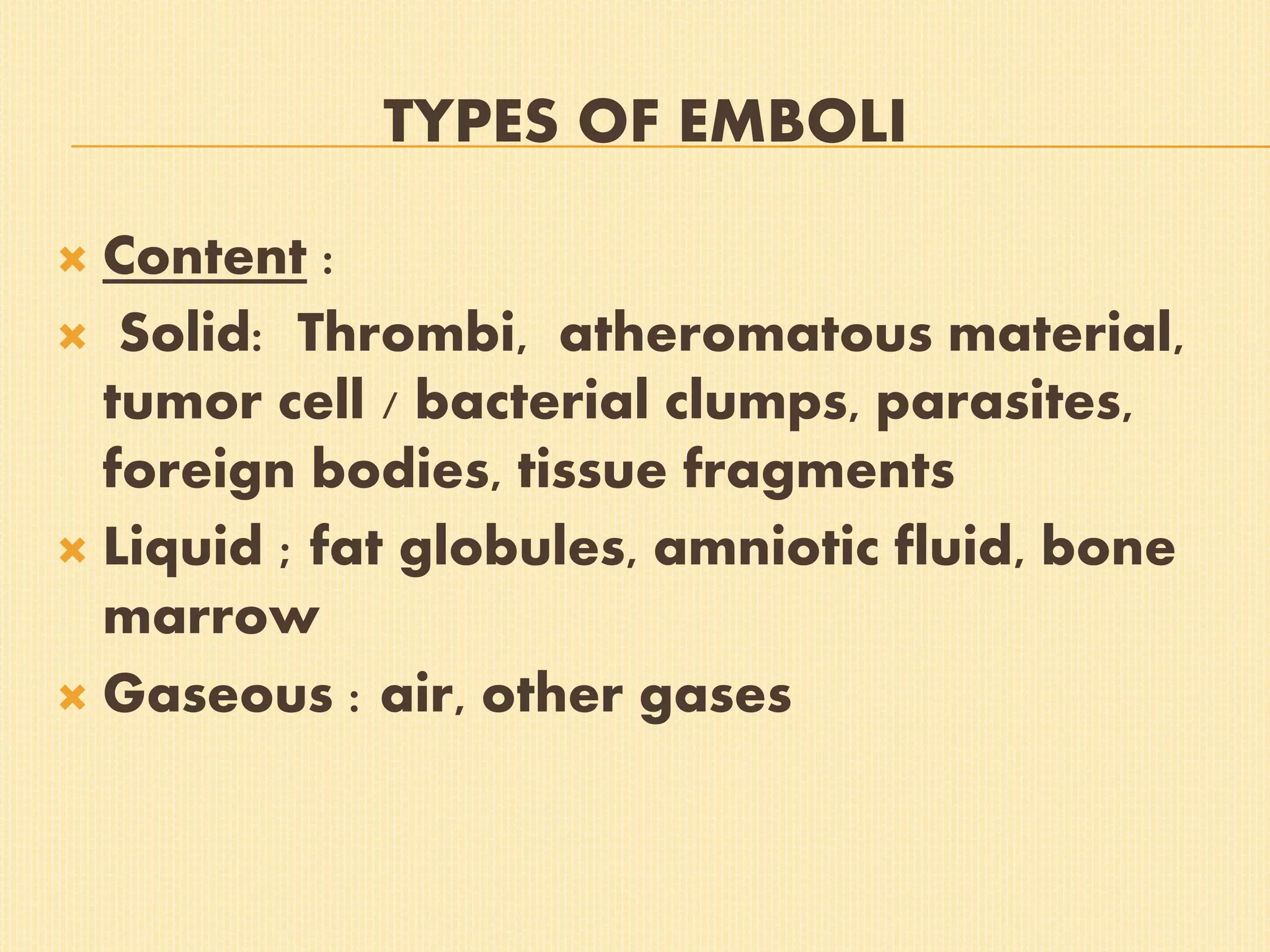Embolism is the obstruction of blood vessels by foreign particles carried in the bloodstream called emboli. The majority of emboli are thromboemboli originating from thrombi or blood clots that detach from vessel walls. Common types of emboli include solid materials like thrombi or tumors, liquid materials like fat or amniotic fluid, and gaseous materials like air. Pulmonary embolism is a potentially fatal condition caused by emboli blocking the pulmonary arteries, which can lead to sudden death or pulmonary infarction and complications like pulmonary hypertension. Other clinical manifestations of embolism include infarction of organs like the heart, brain, kidneys, liver, and spleen due to impaired blood flow.





















































